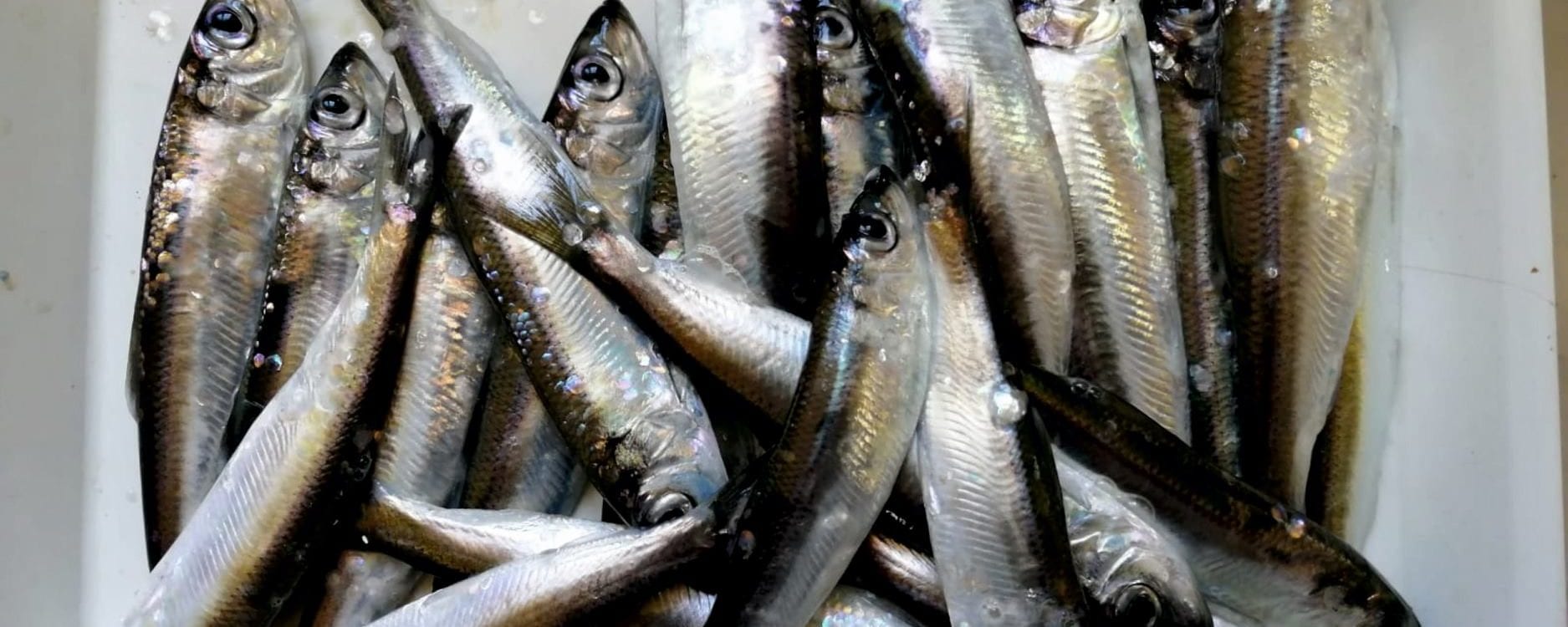Spawning population
Understanding Baltic herring age and growth
Estimating the age of Baltic herring (Clupea harengus membras) is primarily done using otoliths (ear bones), which record growth rings similar to tree rings. Until 1997, whole otoliths were used for age reading in the Archipelago Sea population. However, due to the slow growth of herring, distinguishing the annual rings became challenging. Since 1998, a new method was adopted: each otolith is fixed onto a polycarbonate chip, embedded in epoxy resin, and then ground to expose the nucleus. This technique significantly improves the visibility of the growth rings, allowing for more accurate age estimation.
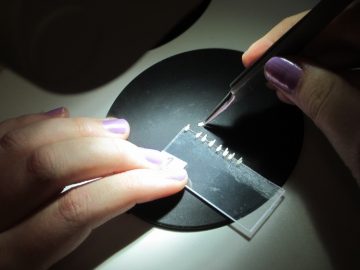
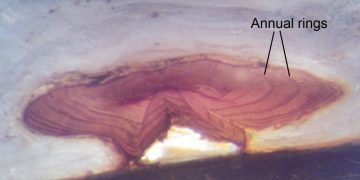
Life stages and longevity
Baltic herring typically reach sexual maturity at age 3, although some individuals can mature as early as age 2. These fish can live up to 10-15 years, and in the Airisto spawning area, our data suggest that some individuals are now living beyond 20 years. This extended lifespan may be a result of changing environmental conditions, such as lower predation pressure or reduced fishing intensity in specific areas.
Diverse spawning population
The spawning population of Baltic herring is made up of fish of various ages, with the most common spawners ranging from 3 to 6 years old. Spawning shoals include fish of different sizes, with the smallest mature herring measuring around 10-11 cm. This diversity in age and size contributes to the resilience of the population, but it also reflects the influence of environmental variability on growth and survival. According to Rajasilta et al. (2021), the size and condition of spawners are influenced by environmental factors, such as prey availability and temperature. Smaller, slow-growing individuals may have an advantage in variable environments, as they tend to allocate more energy toward reproductive traits rather than rapid growth.
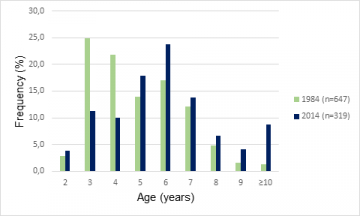
Changes over time
Since 1984, we have monitored the spawning herring population in the Airisto area. Our data indicate that the characteristics of this population have changed significantly, reflecting shifts in environmental conditions. Specifically:
- Declining Size: The average size of herring has decreased from 21 cm in the 1980s to 16 cm in recent years. This change is attributed to a decline in growth rates, observed throughout the Baltic Sea.
- Lipid Reserves: The lipid content in both ovaries and whole fish has decreased over time, likely due to lower salinity, higher temperature and changes in prey availability (Rajasilta et al., 2021). Lipids are crucial for egg quality and larval survival, and reduced reserves may impact reproductive success.
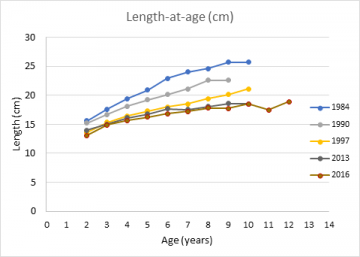
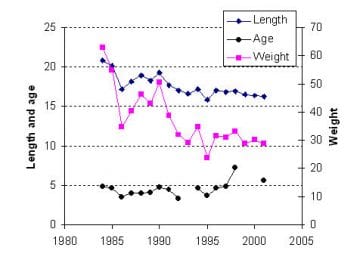
Lipid content and food resources
Lipid content in herring is closely linked to environmental factors and food availability. While female size alone does not determine ovarian lipid concentrations, higher lipid reserves are often observed in years with abundant prey species, such as mysid shrimps and amphipods. These prey are particularly important in autumn when herring accumulate energy reserves for spawning.
There is thus a need for more comprehensive data on the abundance of key prey species, especially during the critical feeding period before winter. This information could help explain variations in lipid content and provide insights into how changing prey availability affects herring condition and reproductive success.
Seasonal variation in spawning
Herring typically spawn from May to July, but the timing can vary based on environmental conditions. In some years, spawning starts as early as April and can extend into August. Seasonal variation in temperature and food availability influences key reproductive traits, such as gonad weight and fecundity.
In 1990, a year with notable temperature fluctuations, herring females spawning later in the season had lower gonad weights compared to those spawning earlier. This highlights the importance of accounting for seasonal variation when comparing samples across different times or regions.
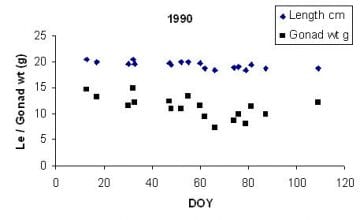
Related publications
- Rajasilta, M., Mäkinen, K., Ruuskanen, S., Hänninen, J., & Laine, P. (2021). Long-term data reveal the associations of egg quality with abiotic factors and female traits in the Baltic herring under variable environmental conditions. Frontiers in Marine Science. Doi: https://doi.org/10.3389/fmars.2021.698480.
- Rajasilta, M., Hänninen, J., Laaksonen, L., Laine, P., Suomela, J. P., Vuorinen, I., & Mäkinen, K. (2018). Influence of environmental conditions, population density, and prey type on the lipid content in Baltic herring (Clupea harengus membras) from the northern Baltic Sea. Canadian Journal of Fisheries and Aquatic Sciences , (999), 1-10.
- Rajasilta, M., Laine, P., & Paranko, J. (2010). Current growth, fat reserves, and somatic condition of juvenile Baltic herring reared in different salinities. Helgoland Marine Research, 65(1), 59.
- Eklund, J., Rajasilta, M., & Laine, P. (2001). Baltic herring growth pattern in relation to spawning time. In: Herring: Expectations for a New Millennium (Eds. F. Funk, J. Blackburn, D. Hay, A. J. Paul, R. Stephenson, R. Toresen, & D. Witherell), pp. 155-169. University of Alaska Sea Grant.
- Laine, P., & Rajasilta, M. (1998). Changes in the reproductive properties of Baltic herring females during the spawning season. Fisheries Research, 36: 67-73.
- Rajasilta, M., Paranko, J., & Laine, P. (1997). Reproductive characteristics of the male herring in the northern Baltic Sea. Journal of Fish Biology, 51: 978-988.

